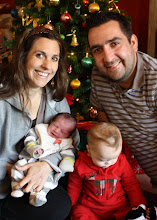
JERUSALEM - The quiet of the Sabbath was pierced Saturday morning by the drums and bagpipes of marching bands that led the patriarchs of various churches in the Old City toward the Holy Sepulchre for the Holy Fire ceremony the day before the Orthodox Easter.
In a nation where headlines regarding Israelis and Palestinians dominate the news, the few Christians here cling to Easter as the one day a year when they parade their identity despite being a 2 percent minority among Jews and Muslims.

The indigenous Christian community is bolstered at this time each year by thousands of international pilgrims who pack into the Old City for a chance to attend the Holy Fire ceremony at the Holy Sepulchre, traditionally believed to be the tomb of Jesus by Orthodox and Catholic Christians. Some pilgrims sleep outside the church the night before in order to be first inside the church. Greek Orthodox, Armenians and other Eastern rite Christians follow a different calendar than Catholics and Protestants, celebrating Easter on Sunday, April 19.
About 10,000 worshippers were allowed into the church on Saturday, including Steve Toumayan, 32, a Jerusalem native who now lives in Toronto. Toumayan said he took his vacation during Easter so he could return to Jerusalem and attend the Holy Fire service again after 10 years.
“This is the place to be. Everything happened here,” he said referring to Jesus’ death and resurrection.
The ritual of the holy fire dates back at least 1,200 years and the origin of the flame, which is said to leap from the tomb, is considered a miracle by the faithful.

But the Holy Fire, or Sabbath of Light ceremony, has been marred in the past by fights between Christians vying for coveted turf in the historic church. One year the Greek Patriarch and an Armenian priest came to blows in the tomb of Jesus, leading to a fight that spilled out between followers of the denominations.
Since then, young Christian men don a priest robe for the day ready for a fight; hundreds of Jewish Israeli police, border guard units and riot police block sections of the Old City to control entry to the church; and Muslim families, who hold the church keys, seal the tomb of Jesus with wax when the priests go inside to pray.
This year no inter-Christian fights were reported although many scuffles erupted at police checkpoints when pilgrims pushed to get through police barricades. Otherwise, the ceremony was peaceful and touching to the faithful who awaited the flame. Congregants from the Ukraine, Russia, Poland, Greece and Armenian, among others, held bundles of candles as they waited for the Greek Orthodox Patriarch in the Holy Land, Theofilos III to enter the tomb. After the flame appeared it was passed from the tomb and relayed to all the candles in the church. One is even flown to Greece.
Before the flame was passed from within the tomb, Nectar Derian, 65, from New York, on her first visit to Israel, thanked God for the opportunity to be at the ceremony.

“This light comes from heaven and I’m anxious to light my candle,” she said.
Since the Orthodox Palm Sunday last week, the Christian and Armenian quarters of the Old City have been packed with visitors, revelers and proud bearers of jewelry or tattoos of crosses. Naro Kalaydian, owner of Bulgourji Armenian Restaurant, said the business had seen an endless run of tourists from around the world and local Christians on holiday the entire week, a significant boost from last year.
The Holy Sepulchre was dedicated by Constantine in the 4th century. The present church was built in 1810. Today about 14 denominations claim some degree of rights in the church, with six that have rights to hold daily services in the church including Armenian Orthodox, Coptic, Ethiopian, Greek Orthodox, Roman Catholic, and Syrian Orthodox. All denominations abide by a decision that allows a Muslim family in the Old City to hold the keys to the church.


